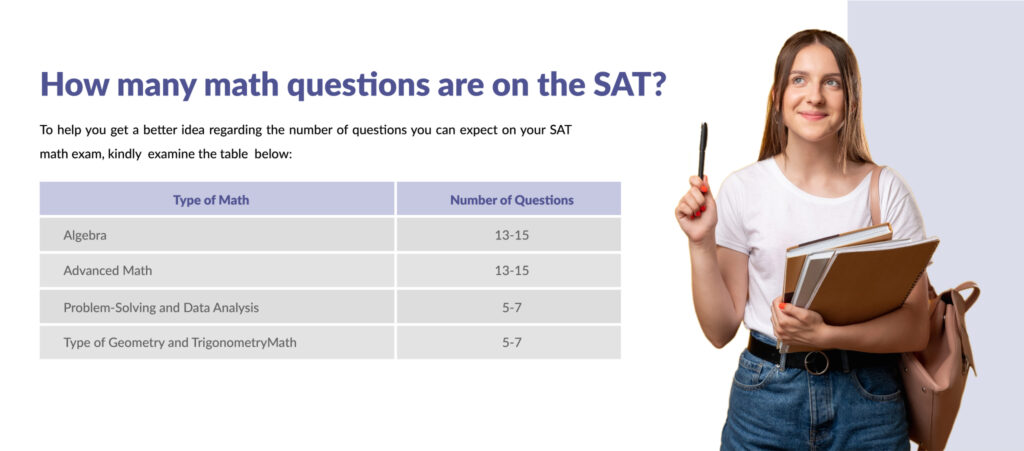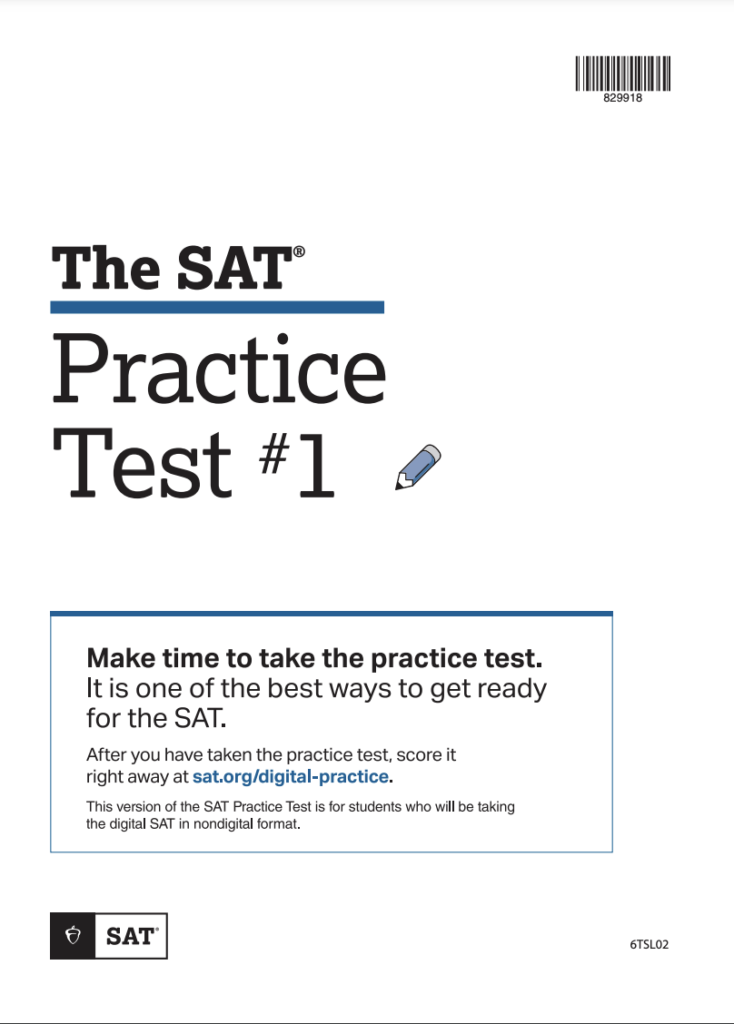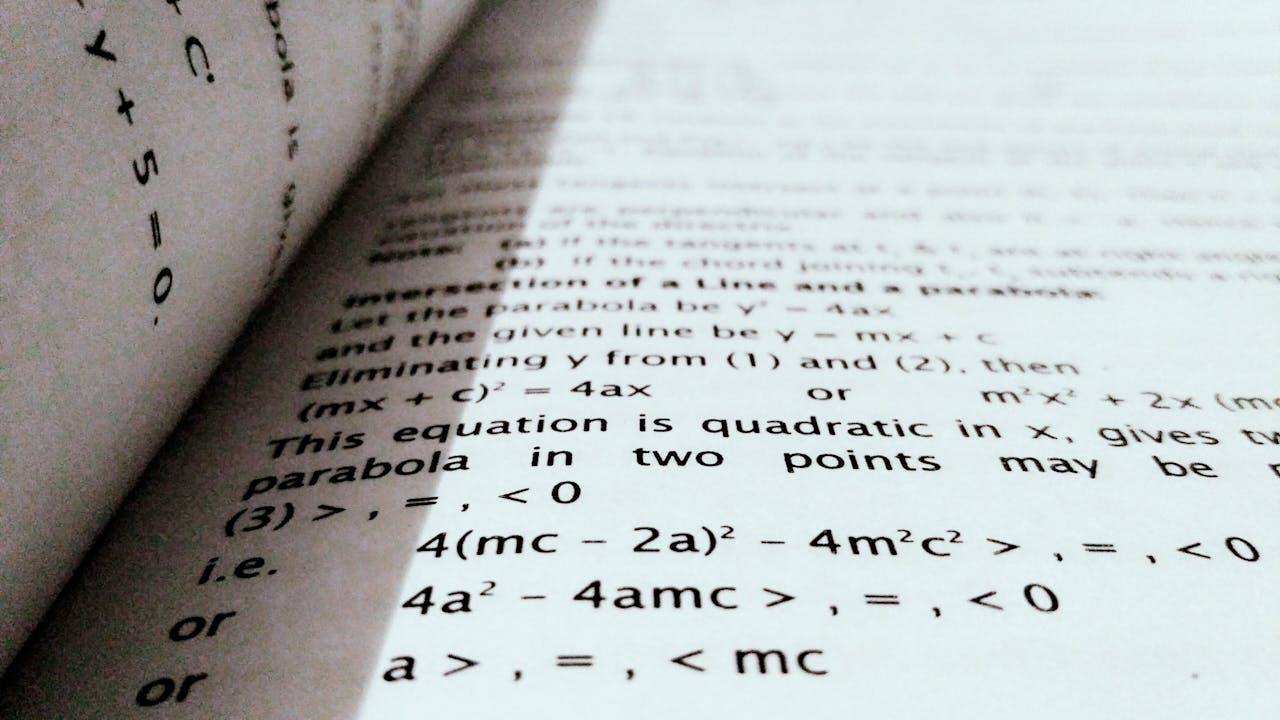The SAT math exam is a standardized test and represents 50% of the overall SAT exam, with English reading and writing representing the other 50%. The score you get from the SAT math section ranges anywhere from 200 (lowest) to 800 (highest). Those who score high on this exam stand a better chance at getting accepted into their college of choice, as the SAT score happens to be one of the major criteria most schools consider during the application process.
Today, we will reveal what type of math is on the SAT, how many questions you can expect, and give you the best strategies and tips on how to prepare.
An overview of SAT math questions
If you’ve been wondering what kind of math is on the SAT, we’ve got you covered! Generally speaking, it’s the kind of math you are likely to encounter during your university studies as well as later on in your career. The main areas are as follows:
- Algebra
- Advanced Math
- Problem-Solving and Data Analysis
- Geometry and Trigonometry
Similarly to what is the case in the English section of the SAT exam, the SAT math is divided into 2 modules. In consists of:
- Multiple-choice questions
- Student-produced response questions
The purpose of these questions is to assess how well you comprehend fundamental math concepts that you are expected to attain an understanding of in you high school years. So what math is on the SAT in terms of context? Roughly 30% of these are set in some kind of a real-world scenario the solution to which requires an understanding of essential math principles.
To help you get an overview of what to expect regarding what type of math is on the SAT, we’ve condensed it down to the most relevant sections.
Algebra
You will need to know how to:
- Solve linear equations (or inequalities with two variables)
- Interpret a linear equation, inequality, or expression in a given context
- Demonstrate an understanding of graphs and how they translate to an equation
- Solve a linear equation with one variable (may include absolute values)
- Comprehend a word problem and translate it into an equation, inequality or expression
Data analysis and problem-solving
Certain SAT math questions will require you to:
- Comprehend how linear and exponential growth are different
- Make a prediction regarding a line or curve that would best fit on a scatterplot
- Analyze data to calculate probabilities
- Demonstrate an understanding of how proportions, rates, and ratios work
- Analyze data to make statistical inferences and justify them
- Perform unit conversions
- Solve a problem using percentages
- Demonstrate the ability to calculate mode, mean, median, and range of data
Advanced math
In addition, you will need to demonstrate knowledge regarding:
- How to isolate a variable in a nonlinear equation
- Polynomials and how zeros and other factors relate to each other and the polynomial’s graph
- Solving equations containing variables in the denominator
- Manipulating and interpreting nonlinear equations
- Function notation and how transformations/compositions relate to it
- Simplification of expressions with exponents
- Solving linear and quadratic equations
- Using exponential or quadratic function in relation to real-world context
- Nonlinear graphs and how they are tied to systems of nonlinear equations
- Performing operations with polynomial expressions, including addition, subtraction, division, and multiplication
- How to solve quadratic equations using factoring, a quadratic formula, and completing the square
Other
Last but not least, SAT math also consists of:
- Being able to perform operations between complex numbers
- Conversions between radian and degree measures
- Being able to apply area and volume formulas (provided on the test)
- Utilizing the Pythagorean theorem or trigonometric ratios (sine, cosine, tangent) to solve a right triangle
- Calculating whatever values are missing in a circle (sector areas, angle measures, arc lengths, chord lengths)
- Pinpointing the relationship between similar triangles, right triangles, and trigonometric ratios
- Interpreting and finding the standard form for the equation of a circle in the coordinate plane
- Solving a problem where parallel lines are cut by a transversal
- Solving problems with similar or congruent triangles
How many math questions are on the SAT?
To help you get a better idea regarding the number of questions you can expect on your SAT math exam, kindly examine the table below:

In-depth about SAT math questions: what is being tested for and why?
Now that you are fully informed regarding what kind of math is on the SAT, let’s dive into the philosophy of why these kinds of questions are being asked in the first place. This will give you some much-needed contextual insights rather than simply stating what kind of equations you’ll be asked to solve.
Real-world scenarios
The College Board wants to emphasize the fact that math is used to come up with solutions to real-life problems. With this in mind, SAT math questions have eventually been redesigned to focus on real-life skills. Consequently, there is now less emphasis on abstract concepts.
The students will be given realistic scenarios and situations to solve. For instance, this may involve having to:
- Calculate how much gas remains in a car tank;
- or converting one currency to another.
In other words, these are likely to be the kinds of scenarios one might encounter in day-to-day life.
Problems requiring multiple steps to solve
If you’re getting the impression that math problems typically require multiple steps to solve, you’d be correct! This ensures that the students get to be as involved in the process as possible all the way through. Naturally, this tends to require some proper time management essentials on their end, so getting some SAT math practice is the recommended path to take (more on this later).
Calculator vs. non-calculator sections
One of the things to keep in mind about SAT math is that there are calculator and non-calculator SAT math questions. While technically speaking, you will be able to have a calculator by your side all the time, note that there is a 25-minute long section where it won’t be of much use. In other words, while you won’t be asked to put it away, it won’t really be of any help in tackling that particular section.
The College Board calculator policy requires you to follow certain rules, among which is bringing your own calculator and not sharing it with others. However, an important skill is knowing when to use it at all – in certain cases, it can be more of a hindrance rather than of any help. At the end of the day, a calculator is only as smart as the person wielding it!
This is why the no-calculator section was designed to put your other math skills to the test. Case in point, an argument can be made that you won’t even need to rely on one in the so-called ‘calculator’ section, as attempting to do so would only slow you down.
Geometry and trigonometry
For those wondering what math is on the SAT, geometry and trigonometry questions represent about 10% of it. The only issue is, if you decide to take the SAT exam during your junior years rather than when you’re already a high school senior, this kind of knowledge might not be in your arsenal at the time. Therefore, we strongly advise you to take SAT prep lessons with Novel Prep tutors to fill in those gaps in your knowledge. They will teach you all you need to know about functions, algebra, inequalities, graphs, word problems and more.
Grid-in questions
At the bottom of your SAT math sheet, there will be a grid-in section consisting of 13 questions in total. You will need to fill in the corresponding bubbles to be credited for your answer, despite there being a dedicated space for writing your answer. There are bubbles for digits between 0 and 9 plus corresponding bubbles for decimals. Note that this may require prior practice even though it’s a minor technicality, so we strongly encourage you to print out an SAT practice test and complete it to give yourself that much-needed practice through experience.
Extended thinking problem
One segment of the overall SAT math questions falls under the extended thinking problem. These can be described as grid-in questions that you’ll encounter during the 55-minute section. In layman’s terms, you will be presented with a:
- Table;
- a graph;
- or a word problem scenario.
Then, you’ll need to answer multiple questions in relation to it.
Common reasons why students struggle with SAT math questions
There are multiple explanations as to why certain students struggle with SAT math questions, to avoid simply describing them as challenging. These can be any of the following:
- They don’t understand the wording. And yes, some of them may be trick questions that are intentionally designed to confuse you! For instance, they may try to throw you off by mentioning irrelevant details or using tricky language.
- They are unfamiliar with the concept at hand. The fact of the matter is that certain questions are designed to be harder on purpose and will test one’s familiarity with matrices, complex trigonometry, and advanced function analysis.
- Multiple steps and word problems overwhelm them. It’s not uncommon that arriving at a solution to these kinds of math problems requires multifaceted math knowledge, including translating real-world problems into math, which may prove to be too much for certain students.
Do any of these sound like you? There is absolutely no reason to struggle alone. Novel Prep’s SAT prep course features several math drills designed to teach you the fundamental skills that you will be tested for when the big day comes. There is also the option of working with one of our tutoring experts one-on-one, allowing us to focus on filling whatever gaps are still left in your knowledge.
Types of SAT math questions that give students a hard time
Now that we’ve covered the ‘why’, let’s also examine ‘what’ students are often struggling with. Most commonly, it comes down to the following types of math questions:
- Trigonometry and radians. Certain questions may involve testing your knowledge of less common trigonometric angles, identities, and angles in radians or perhaps even graphs of advanced trigonometric functions.
- Word problems. These can be written in a dubious manner to trip students up while testing their knowledge of probability, systems of equations, ratios, etc.
- Interpreting data in peculiar formats. Less commonly represented types of graphs or chart is another thing that can throw people off. Examples include scatter plots, box plots, or histograms.
- Advanced functions. Some functions tend to be more complex than others and may require transformations or unusual function rotation.
SAT math practice: how to prepare in the best manner possible
Now you know what lies ahead, but knowing what math is on the SAT is only half the battle! To summarize and throw in some extra tips along the way:
- The SAT math sections consist of multiple-choice and grid-in questions (the latter require you to come up with your own answer)
- Keep in mind that you might be asked multiple questions about a single scenario
- When gridding in your answers, kindly convert any mixed numbers to improper fractions and reduce fractions to their lower terms
- The grid can hold four decimal places
The other half of the battle is knowing how to prepare for the SAT math test that lies ahead:
- Memorize important formulas. We’ve included some below, but the key takeaway here is that you should put them into practice to avoid losing too much time when it counts.
- Take at least one SAT practice test (see the section below), then analyze your mistakes and learn from them.
- Learn to be time-efficient. Remember that the SAT exam is very time-sensitive and you shouldn’t spend much more than 1 minute and 22 seconds on each individual question. If it proves to be too difficult to crack, leave it behind and return back later when you’ve completed the rest.
- Practice using the calculator efficiently. This is another one of those ‘silent’ skills that you need to master, otherwise you’ll spend too much time trying to tame it.
- Don’t shy away from working with a SAT prep tutor. To secure a good SAT score, there are many things you need to know, some of which are incredibly hard to tackle on your own. The good news is, it doesn’t have to be this way, and working with a Novel Prep tutor is a flexible solution that adapts to your schedule and won’t break the bank.
Free SAT math practice Resources
SAT Math Practice Test
Here is the official practice test from the College Board to help you get started fast:

SAT Math Formula Sheet
pls click the button to download the resource!
Conclusion
And that just about wraps it up! Now you know what type of math is on the SAT and how best to prepare for it. But no matter how you decide to proceed from here, know that good results are unlikely to come without some solid math drills and good old-fashioned practice.
Do you feel there’s something we’ve left out? Do reach out to us and we’ll do our best to provide further clarification. You can also visit our tutoring center where we will recreate the exact testing conditions for you as you attempt to complete a SAT practice test with us live. You can also work with Novel Prep SAT tutors for some additional Q&A.
FAQ
How many SAT math questions are on the test?
A grand total of 44 questions.
What is a good math SAT score?
This depends on your goals and aspirations. Generally speaking, a score of 650 is considered very good and 800 would be considered a perfect SAT score, given that it’s the maximum you can get.
Is there a penalty for wrong answers?
You won’t get negative points for answering wrong, so taking a guess can be worth it if you cannot logically deduce the answer.
What kind of math is on the SAT?
The SAT math test consists of four main sections, namely: Algebra, Advanced Math, Problem-solving and Data Analysis, Geometry, and Trigonometry.
How much time do you have to answer all the math questions?
You have exactly 70 minutes to get your answers ready, so time is of the essence! On average, you can afford to spend around 1 minute and 22 seconds on a single question
Is there a correlation between your SAT score and your future financial well-being?
There is some compelling evidence that suggests this might indeed be the case.




